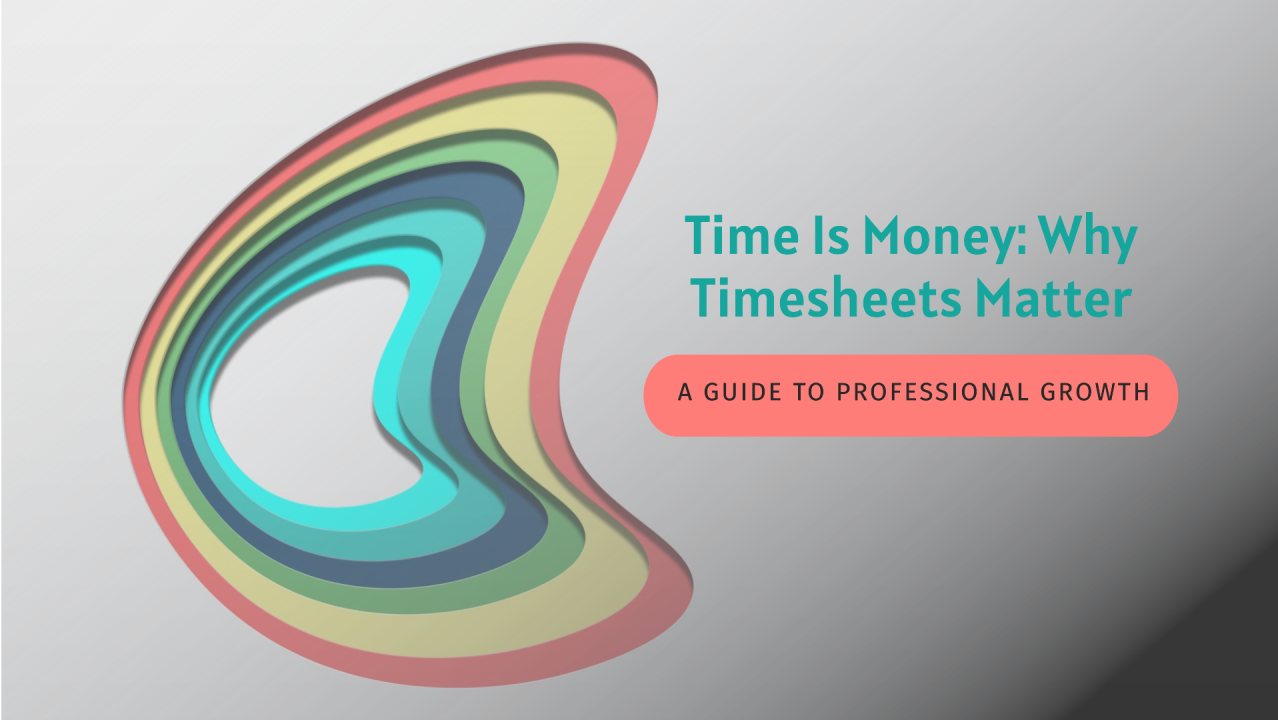
The Importance of Timesheets in the Corporate World: A Tool for Professional Growth
Aditya Atluri
Helping organisation grow through #Strategy | #Operations| #Digital #Innovations | #Design Thinking | #Martech
1. The Mundane Routine of Timesheets In the corporate world, filling timesheets is often seen as just another task to check off the to-do list, particularly on a Friday afternoon when the week’s activities need to be reported. Many associates hurriedly fill in their timesheets for the entire week, providing rough estimates of how their time was spent. Timesheets typically capture vital information, such as the number of hours worked, the projects or tasks undertaken, and, in many cases, the progress made. For example, companies like IBM, Accenture, and Deloitte use timesheets to track project hours and provide detailed insight into task completion rates and team involvement.
The primary reason behind timesheets in most organizations is for billing purposes. Clients need to know how many hours associates worked on their projects, especially when juggling multiple engagements. A clear and accurate reflection of the billable hours ensures that clients are billed correctly and that employees’ time is appropriately allocated. Without a transparent system, companies and clients risk facing miscalculations, impacting profitability and project timelines.
2. A True Reflection of Productivity Beyond billing, timesheets hold immense value in tracking productivity. Timesheets should not be treated as mere forms that need to be filled out for compliance purposes; they should truly reflect the amount of work completed. Leading global firms like Microsoft and PwC use timesheet data to measure employee productivity, ensuring they understand how effectively teams are working and where improvements can be made.
For instance, companies can analyze the amount of time an employee spends on non-core activities, helping them identify inefficiencies. Timesheets also help managers visualize how employees’ time aligns with business goals, ensuring that productivity doesn’t just mean hours worked but tasks accomplished. Having this transparent data can help both managers and employees stay accountable for their contributions.
3. Appraisal Time: A Missed Opportunity When appraisal season rolls around, the timesheet, which could have served as a comprehensive report card for the year, often gets overlooked. Managers and employees alike fail to recognize the potential of timesheets to showcase employee performance. Typically, the focus is on qualitative feedback rather than hard data. However, timesheets offer a tangible way for employees to prove their effectiveness and efficiency. It allows them to demonstrate the value they’ve brought to the organization through the tasks they’ve completed and the time they’ve allocated to various responsibilities.
Instead of scrambling to provide evidence of their contributions, employees should be able to point to their timesheets as an objective measure of their work, making performance reviews more fair and transparent.
领英推荐
4. The Power of Self-Awareness In my opinion, timesheets are the most effective tool for personal reflection and growth. By accurately tracking how much time we spend on each task, we can gain a deep understanding of where our efforts are concentrated. A closer look at your timesheet can reveal if your work is in alignment with your Key Responsibility Areas (KRAs). Are you dedicating enough time to your core responsibilities, or are you getting distracted by tasks that aren’t as critical?
It’s like creating a pie chart of your time—breaking down your day to see if it aligns with your priorities. If you find yourself spending too much time on low-impact tasks, it becomes clear where adjustments need to be made. This level of insight helps professionals align their day-to-day activities with their long-term goals.
5. Using Timesheets to Boost Performance Once you’ve analyzed your timesheet data, it becomes a powerful tool for improvement. By identifying inefficiencies or areas where time could be better spent, you can focus on optimizing how you approach your work. If your timesheet shows you’re spending too much time on one task, it’s a signal to refine your approach and improve your effectiveness.
If you manage your time effectively and find ways to improve your throughput, you’ve already done justice to your role. And if you can quantify that improvement through timesheets, presenting clear data on your progress, you’ve created undeniable proof of your efforts. No one can take that away from you during your performance review, ensuring you get the recognition you deserve.
6. Frameworks to Use Timesheets Effectively To maximize the benefits of timesheets, here are some practical frameworks to consider:
Conclusion: Like Stats in Sports, Timesheets Measure Performance In the world of sports, every athlete’s performance is quantified—whether it's shooting percentages in basketball or the number of goals in soccer. These statistics provide an objective measurement of their contributions to the team. Timesheets work the same way in the corporate world. They offer a clear, measurable reflection of our performance, helping us stay accountable to ourselves and our organizations. By using timesheets strategically, you can not only improve your time management but also showcase your achievements, ensuring that your hard work is recognized when it matters most.